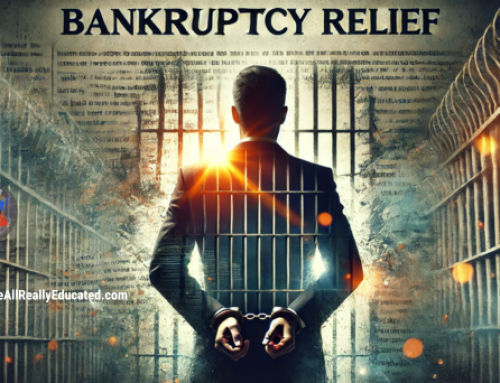Education has long been a battleground for ideological debates, and former President Donald Trump has once again placed it at the center of his political agenda. His proposal to return control of education to individual states, rather than leaving it under the purview of the federal government, has sparked both applause and controversy. But what exactly does this plan entail, and what could it mean for students, teachers, and parents across the United States?
Recent proposals to dismantle the U.S. Department of Education and shift its responsibilities to state and local governments have sparked renewed debate about the future of American education.
The Vision: Dismantling the U.S. Department of Education
At the heart of Trump’s proposal is the idea of eliminating the U.S. Department of Education (DOE) altogether. Established in 1979 under President Jimmy Carter, the DOE has since played a crucial role in enforcing federal education laws, ensuring civil rights protections, and administering funding for schools across the country.
Trump, however, argues that the department has become bloated, bureaucratic, and inefficient. His vision is to shift educational authority back to the states, allowing local governments to control their own policies, curricula, and funding priorities. In his 2025 executive order, he emphasized that “education decisions should be made by parents and local communities, not by unelected bureaucrats in Washington.” Yes, Trump wants to shut down the Department of Education, which is beyond historical as no other President has done this before!
Key Components of Trump’s Education Plan
Trump’s plan to return educational control to the states includes several bold initiatives:
- Eliminating the DOE – This would involve dismantling the federal agency, reallocating its responsibilities to state education departments, and transferring civil rights enforcement to the Department of Justice.
- Expanding School Choice – Trump has been a strong advocate for school vouchers, charter schools, and homeschooling, arguing that parents should have more options when it comes to their children’s education. Under his plan, federal funding could be redirected to support these initiatives at the state level.
- Restricting Federal Influence on Curriculum – Trump has repeatedly criticized what he calls “woke indoctrination” in schools, particularly topics related to critical race theory and gender identity. He has proposed blocking federal funds for schools that promote such curricula, giving states more power to set educational content standards.
- Encouraging “Patriotic Education” – Trump’s plan includes an initiative to emphasize “American exceptionalism” in history education. He argues that students should be taught a curriculum that highlights the nation’s achievements rather than focusing on systemic injustices.
- Cutting Federal Education Regulations – Trump’s plan would significantly reduce federal oversight of education, shifting responsibilities such as standardized testing, special education mandates, and higher education regulations back to individual states.
The Potential Benefits of State-Controlled Education
Supporters of Trump’s plan argue that returning control of education to the states would:
- Increase Accountability – Local governments and school boards are more accessible to parents and communities than federal agencies, making it easier for citizens to influence education policies.
- Promote Innovation – With greater flexibility, states and local school districts could experiment with new education models tailored to their unique populations.
- Reduce Bureaucracy – By eliminating federal red tape, schools could focus more on teaching and less on complying with regulations.
- Empower Parents – School choice initiatives would give parents more control over their children’s education, fostering competition among schools to improve quality.
Concerns and Challenges
Critics, however, see serious risks in dismantling federal oversight of education, including:
- Widening Inequality – Federal funding often helps address disparities in education access and quality. Without a centralized system, wealthier states and districts could thrive while poorer regions struggle.
- Lack of National Standards – Without federal benchmarks, the quality of education could vary dramatically from state to state, potentially disadvantaging students in states with weaker policies.
- Civil Rights Protections – The DOE enforces anti-discrimination laws in schools. Transferring these responsibilities to the Department of Justice raises concerns about whether students’ rights will be adequately protected.
- Potential for Political Manipulation – Without federal oversight, states could implement highly politicized curricula, leading to education systems that reflect partisan agendas rather than balanced perspectives.
Has Trump Made Progress Toward This Goal?
During his first term, Trump took some steps toward decentralizing education policy, including appointing Betsy DeVos as Secretary of Education, who pushed for school choice programs. However, his efforts to significantly weaken the DOE faced strong opposition from Congress and educators. Now, with a renewed push, Trump has signed executive orders in 2025 aimed at beginning the process of dismantling the DOE, though full implementation would require legislative action.
So far, the reception has been mixed. Some Republican-led states have embraced the initiative, drafting policies to assume more control over education funding and curriculum decisions. Others, particularly Democratic-leaning states, have expressed strong resistance, arguing that federal oversight is necessary to maintain education equity and protect student rights.
What’s Next?
Whether Trump’s plan to return education control to the states will succeed remains uncertain. Abolishing the DOE would require congressional approval, and any legislative attempt would likely face legal challenges and political resistance. However, even without fully dismantling the department, Trump’s influence is already shifting education policy in many conservative-leaning states, where school choice programs and curriculum changes are gaining traction. The power is back to the States!








Leave A Comment